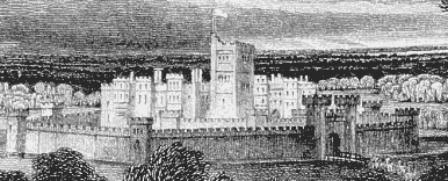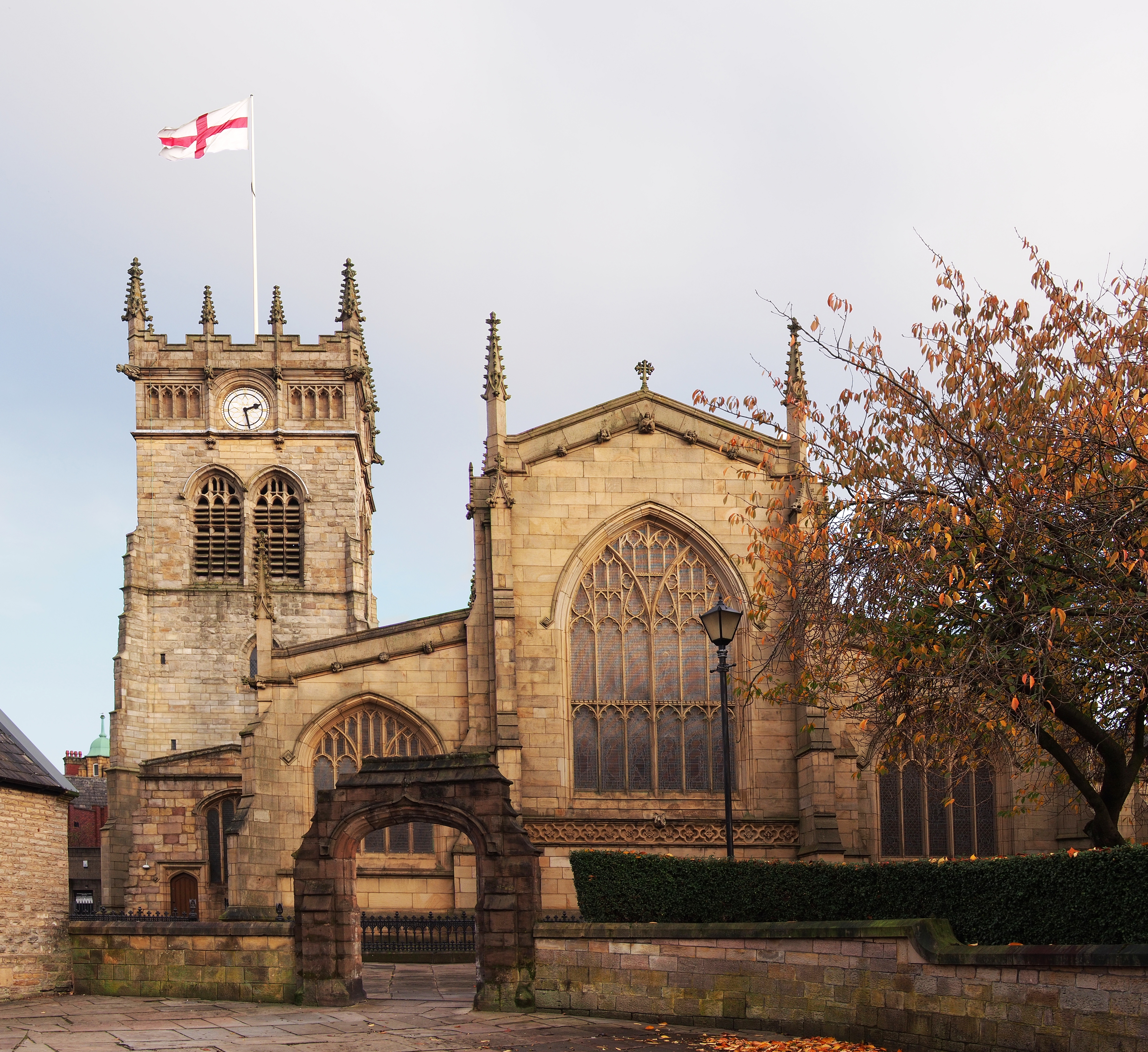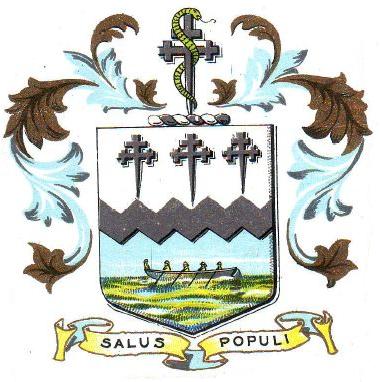|
River Tawd
The River Tawd flows through Skelmersdale and Lathom in West Lancashire. Tawd Bridge carried Ormskirk Road, the main arterial road from Wigan to Ormskirk and Southport. This is well known to Upholland locals as the place where highwayman George Lyons held up his victims during the 18th century. Today, the river flows through the middle of Skelmersdale in large culverts. It emerges near the town's shopping centre, the Concourse, and flows into a country park and Tawd Vale Adventure Centre, a Scout campsite owned and operated by Merseyside Scouts, on the site of the 19th and early 20th century colliery. Parts of the river are a county biological heritage site. It is a tributary of the River Douglas which it joins in Lathom. Water quality The Environment Agency measure the water quality of the river systems in England. Each is given an overall ecological status, which may be one of five levels: high, good, moderate, poor and bad. There are several components that are used to d ... [...More Info...] [...Related Items...] OR: [Wikipedia] [Google] [Baidu] |
Skelmersdale
Skelmersdale is a town in the West Lancashire district of England. It sits on the River Tawd, west of Wigan, north-east of Liverpool and south-west of Preston, Lancashire, Preston. In 2006, it had a population of 38,813. The town is known locally as Skem . While the first record of the town is in the Domesday Book of 1086, much of the town, including the current town centre, was developed as a second wave New towns in the United Kingdom, new town in the 1960s. The town's initial development as a coal town coincided with the Industrial Revolution in the 19th century; the town lies on the Lancashire Coalfield. Geography Skelmersdale is situated in a small valley on the River Tawd. The town was designed to accommodate both nature and compact housing estates, and the town centre contains a large amount of forestation. The Beacon Country Park lies to the east of Skelmersdale, where the Beacon Point lies, along with a golf club. Furthermore, the Tawd Valley Park runs through the ... [...More Info...] [...Related Items...] OR: [Wikipedia] [Google] [Baidu] |
Lathom
Lathom () is a village and civil parish in Lancashire, England, about 3 miles (5 km) northeast of Ormskirk. It is in the district of West Lancashire, and with the parish of Newburgh forms part of Newburgh ward. The population of the civil parish at the 2011 census was 914. The Leeds and Liverpool Canal passes through Lathom. History Toponymy Lathom was recorded as Latune in the Domesday Book in 1086, Lathum in 1200, and Lathom in 1223 after which it was the usual spelling. It derives from the dative plural of Old Norse '' hlaða'', a barn. Lathom thus means ''at the barns''. Manor In 1066 the manor of Lathom was the most important of 17 manors held by Uctred, an Anglo-Danish landowner. These manors were set up by Æthelstan in the 10th century. By 1189 Robert Fitzhenry de Lathom possessed lands throughout south Lancashire, extending to Flixton in the barony of Manchester. Siward son of Dunning held the township in thanage in the reign of Henry II. Robert de Lathom, i ... [...More Info...] [...Related Items...] OR: [Wikipedia] [Google] [Baidu] |
West Lancashire
West Lancashire is a local government district with borough status in Lancashire, England. The council is based in Ormskirk, and the largest town is Skelmersdale. The district borders Fylde to the north, over the Ribble Estuary; South Ribble, Chorley, and Wigan to the east; St Helens and Knowsley to the south; and Sefton to the south and west. The borough has a population of 117,400 and an area of . It is primarily rural, and the most populous settlements after Ormskirk and Skelmersdale are Burscough (9,935), Up Holland (7,578), and Tarleton (5,959). The borough council is based in Ormskirk, and there are twenty-one civil parishes. The west of the borough contains much of the southern part of the Lancashire Plain, a low-lying region of mossland. A large lake called Martin Mere occupied much of the area until it was drained for agriculture. The northern border of the borough is the Ribble Estuary, and both it and the remnant of Martin Mere are Ramsar sites. In the eas ... [...More Info...] [...Related Items...] OR: [Wikipedia] [Google] [Baidu] |
Wigan
Wigan ( ) is a town in Greater Manchester, England. The town is midway between the two cities of Manchester, to the south-east, and Liverpool, to the south-west. It is the largest settlement in the Metropolitan Borough of Wigan and is its administrative centre. The town has a population of 107,732 and the wider borough of 330,714. Wigan is part of the Historic counties of England, historic county of Lancashire. Wigan was in the territory of the Brigantes, an ancient List of ancient Celtic peoples and tribes, Celtic tribe that ruled much of what is now Northern England. The Brigantes were subjugated in the Roman conquest of Britain and the Roman settlement of was established where Wigan lies. Wigan was incorporated as a Borough status in the United Kingdom, borough in 1246, following the issue of a charter by Henry III of England, King Henry III of England. At the end of the Middle Ages, it was one of four boroughs in Lancashire established by royal charter. The Industrial Re ... [...More Info...] [...Related Items...] OR: [Wikipedia] [Google] [Baidu] |
Ormskirk
Ormskirk is a market town in the West Lancashire district of Lancashire, England. It is located north of Liverpool, northwest of St Helens, Merseyside, St Helens, southeast of Southport and southwest of Preston, Lancashire, Preston. Ormskirk is known for its gingerbread. In 2011 it had a population of 24,073. Geography and administration Ormskirk lies on sloping ground on the side of a ridge, whose highest point is above sea-level, at the centre of the West Lancashire Coastal Plain, West Lancashire Plain, and has been described as a "planned borough", laid out in the 13th century.Lancashire County Council Ormskirk historic town assessment, Lancashire County Council, 2006 Ormskirk is an unparished area, surrounded by the civil parish, parishes of Bickerstaffe, Aughton, Lancash ... [...More Info...] [...Related Items...] OR: [Wikipedia] [Google] [Baidu] |
Southport
Southport is a seaside resort, seaside town in the Metropolitan Borough of Sefton in Merseyside, England. It lies on the West Lancashire Coastal Plain, West Lancashire coastal plain and the east coast of the Irish Sea, approximately north of Liverpool and southwest of Preston, Lancashire, Preston. At the United Kingdom Census 2021, 2021 census, Southport had a population of 94,421, making it the List of North West England cities and metropolitan areas by population, eleventh most populous settlement in North West England and the third most populous settlement in the Liverpool City Region. The town was founded in 1792 by William Sutton (Southport), William Sutton, an innkeeper from Churchtown, Merseyside, Churchtown, who built a bathing house at what is now the south end of Lord Street, Southport, Lord Street.''North Meols and Southport – a History'', Chapter 9, Peter Aughton (1988) The area was previously known as South Hawes, and was sparsely populated and dominated ... [...More Info...] [...Related Items...] OR: [Wikipedia] [Google] [Baidu] |
Upholland
Up Holland (or Upholland) is a village in Skelmersdale and is a civil parish in the West Lancashire district, in the county of Lancashire, England, west of Wigan. The population at the 2011 census was 7,376. Geography The village is on a small hill 89m above sea level that rises above the West Lancashire Coastal Plain. There are views towards St Helens and Liverpool in the south west, Ormskirk and Southport in the north-west and towards Wigan, Manchester and on to the High Peak of Derbyshire in the east. The parish includes the Pimbo industrial estate. Etymology The place-name is first attested in the Domesday Book of 1086, where it appears as ''Hoiland''. It appears as ''Upholand'' in a Lancashire Inquest of 1226. This is from the Old English , meaning 'land on or by a hoe or spur of a hill'. The name Up Holland differentiates it from another place locally called Downholland, 10 miles to the west (on the other side of Ormskirk). The manor of Holland was a possession of th ... [...More Info...] [...Related Items...] OR: [Wikipedia] [Google] [Baidu] |
Highwayman
A highwayman was a robber who stole from travellers. This type of thief usually travelled and robbed by horse as compared to a footpad who travelled and robbed on foot; mounted highwaymen were widely considered to be socially superior to footpads. Rid, Samuel. "Martin Markall, Beadle of Bridewell," in ''The Elizabethan Underworld'', A. V. Judges, ed. pp. 415–416. George Routledge, 1930Online quotationSpraggs, pp. 107, 169, 190–191. Such criminals operated until the mid- or late 19th century. Highwaywomen, such as Katherine Ferrers, were said to also exist, often dressing as men, especially in fiction. The first attestation of the word ''highwayman'' is from 1617. Euphemisms such as "knights of the road" and "gentlemen of the road" were sometimes used by people interested in romanticizing (with a Robin Hood–esque slant) what was often an especially violent form of stealing. In the 19th-century American West, highwaymen were sometimes known as road agents. In Australia, ... [...More Info...] [...Related Items...] OR: [Wikipedia] [Google] [Baidu] |
George Lyon (highwayman)
George Lyon (c. 1761–22 April 1815) was a highwayman in England. Lyon was born in Upholland, Lancashire, to a poor family and was a career criminal. Prior to arrest George Lyon's one major feat as a highwayman was to hold up the Liverpool mail coach. With his accomplices, who have been unknown since, he planned the robbery at the Legs of Man public house in Wigan. They then persuaded the ostler at the Bull's Head Inn in Upholland to lend them horses for a few hours. They held up the Liverpool mail coach at nearby Tawd Vale on the River Tawd, firing two shots and forcing the driver to pull up so that they could rob the passengers. The gang then returned to the Bull's Head, and when the robbed coach later arrived at the inn, Lyon and his accomplices had an alibi as people had seen them in the pub earlier in the afternoon. In addition to this robbery, Lyon was a habitual thief, and had been transported to one of the colonies for some years before returning to Upholland. Local ... [...More Info...] [...Related Items...] OR: [Wikipedia] [Google] [Baidu] |
Colliery
Coal mining is the process of extracting coal from the ground or from a mine. Coal is valued for its energy content and since the 1880s has been widely used to generate electricity. Steel and cement industries use coal as a fuel for extraction of iron from iron ore and for cement production. In the United Kingdom The United Kingdom of Great Britain and Northern Ireland, commonly known as the United Kingdom (UK) or Britain, is a country in Northwestern Europe, off the coast of European mainland, the continental mainland. It comprises England, Scotlan ... and South Africa, a coal mine and its structures are a colliery, a coal mine is called a "pit", and above-ground mining structures are referred to as a "pit head". In Australia, "colliery" generally refers to an underground coal mine. Coal mining has had many developments in recent years, from the early days of men tunneling, digging, and manually extracting the coal on carts to large Open-pit mining, open-cut and ... [...More Info...] [...Related Items...] OR: [Wikipedia] [Google] [Baidu] |
River Douglas, Lancashire
The River Douglas, also known as the River Asland or Astland, flows through parts of Lancashire and Greater Manchester in North West England. It is a tributary of the River Ribble and has several tributaries, the major ones being the River Tawd and the River Yarrow. In 1720, an act of Parliament, the ( 6 Geo. 1. c. 28), authorized Thomas Steers and William Squire to make the River Douglas navigable to small ships between Wigan and its mouth. Despite financial irregularities, the Douglas Navigation was not completed until 1742. By 1783, it had been replaced by the Leeds and Liverpool Canal, and the river reverted to its natural state. Although the remnants of several locks are still visible between Parbold and Gathurst. The Rufford Branch of the canal joins the river at Tarleton. The river rises on Winter Hill in the West Pennine Moors, and flows for through several towns before reaching the Ribble estuary near Tarleton, with the last being tidal. In 1892, the Douglas ... [...More Info...] [...Related Items...] OR: [Wikipedia] [Google] [Baidu] |





